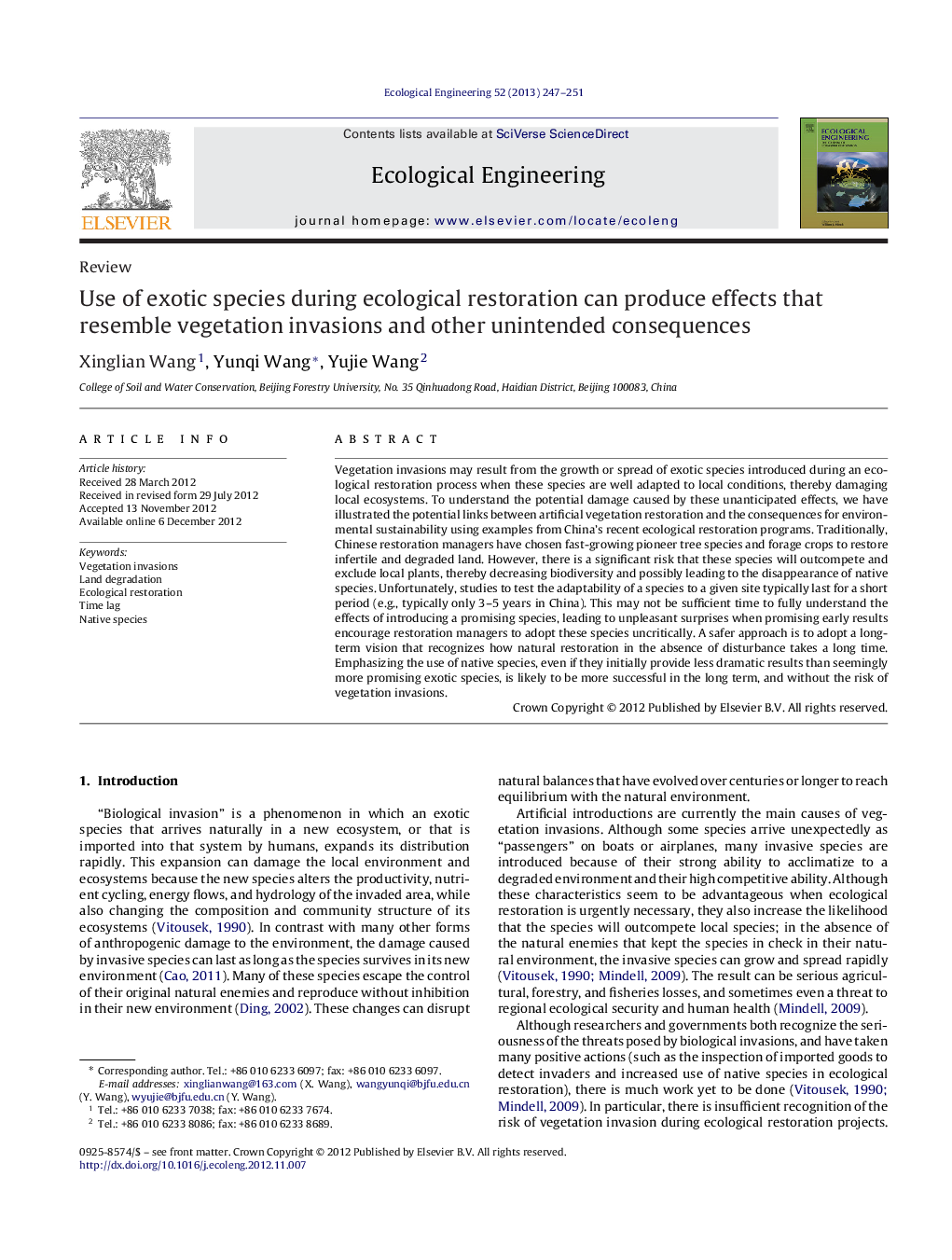| کد مقاله | کد نشریه | سال انتشار | مقاله انگلیسی | نسخه تمام متن |
|---|---|---|---|---|
| 4389760 | 1618046 | 2013 | 5 صفحه PDF | دانلود رایگان |

Vegetation invasions may result from the growth or spread of exotic species introduced during an ecological restoration process when these species are well adapted to local conditions, thereby damaging local ecosystems. To understand the potential damage caused by these unanticipated effects, we have illustrated the potential links between artificial vegetation restoration and the consequences for environmental sustainability using examples from China's recent ecological restoration programs. Traditionally, Chinese restoration managers have chosen fast-growing pioneer tree species and forage crops to restore infertile and degraded land. However, there is a significant risk that these species will outcompete and exclude local plants, thereby decreasing biodiversity and possibly leading to the disappearance of native species. Unfortunately, studies to test the adaptability of a species to a given site typically last for a short period (e.g., typically only 3–5 years in China). This may not be sufficient time to fully understand the effects of introducing a promising species, leading to unpleasant surprises when promising early results encourage restoration managers to adopt these species uncritically. A safer approach is to adopt a long-term vision that recognizes how natural restoration in the absence of disturbance takes a long time. Emphasizing the use of native species, even if they initially provide less dramatic results than seemingly more promising exotic species, is likely to be more successful in the long term, and without the risk of vegetation invasions.
Journal: Ecological Engineering - Volume 52, March 2013, Pages 247–251